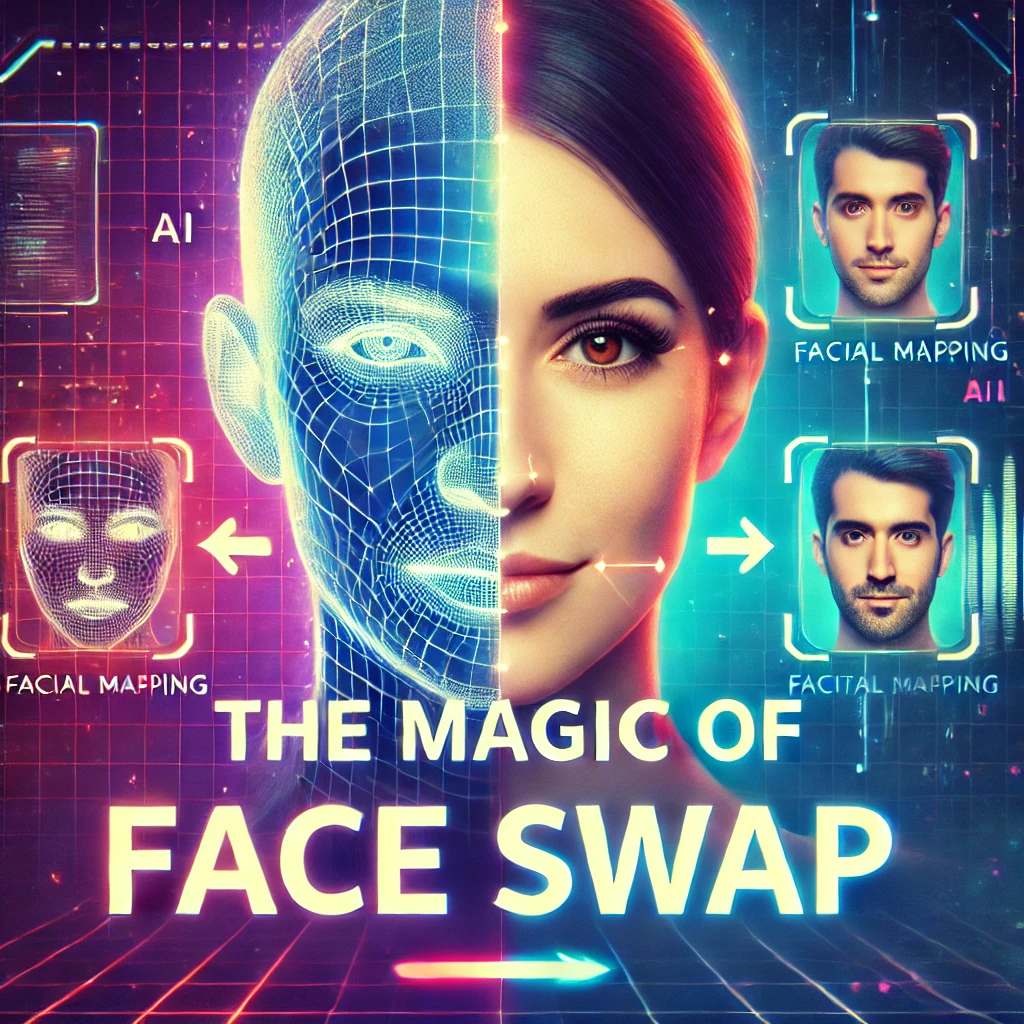The Fascinating World of Face Swap: Technology

Face swapping has emerged as one of the most captivating applications of modern artificial intelligence (AI). The concept is simple yet powerful: replacing one face with another in a photo or video. Initially a niche tool for entertainment, face swap technology has now permeated various industries, from social media and entertainment to education and marketing. Alongside its creative possibilities, however, face swapping raises significant ethical and social questions.
This article dives into the technology behind face swaps, their uses, cultural impact, and the challenges they present.
What Is Face Swap?
Face swapping involves digitally replacing one person’s face with another using AI. While it started as a fun feature in photo editing apps, the technology has advanced to enable highly realistic swaps in videos. Modern face swap technology is powered by:
- AI and Machine Learning: Algorithms analyze and replicate facial features, expressions, and movements.
- Deep Learning: Tools like Generative Adversarial Networks (GANs) create realistic and seamless transitions.
- Facial Recognition: Key facial landmarks are mapped for precision.
The Popularity of Face Swap Technology
The widespread appeal of face swaps lies in their accessibility and ability to entertain. From creating hilarious memes to enhancing storytelling in movies, face swaps are reshaping how we interact with digital content.
1. Social Media Trends
- Apps like Snapchat, Reface, and FaceApp have popularized face swaps with filters and templates.
- Viral challenges and memes, often involving swapping faces with friends, family, or celebrities, dominate platforms like TikTok and Instagram.
2. Entertainment and Media
- Hollywood uses advanced face swap technology for de-aging actors or creating seamless visual effects.
- Parody videos and comedic sketches thrive on face swaps, blending humor and creativity.
3. Educational and Creative Applications
- Educators and historians use face swaps to reimagine historical figures, bringing the past to life in engaging ways.
- Artists leverage face swapping to explore identity, culture, and the boundaries of digital art.
How Face Swap Technology Works
Face swap technology relies on sophisticated algorithms to achieve realistic results. Here’s a simplified breakdown of the process:
- Facial Landmark Detection:
- AI identifies and maps key points on a person’s face (e.g., eyes, nose, mouth).
- Image Alignment:
- The algorithm aligns the target face with the original face to ensure proportions match.
- Blending and Integration:
- Facial features are blended seamlessly into the original image or video, ensuring that lighting, angles, and movements are consistent.
- Expression Mapping:
- Advanced tools replicate facial expressions and emotions, making the swap look natural.
Applications of Face Swap Technology
Face swap technology isn’t just for laughs; it has real-world applications across various industries:
1. Film and Television
- De-aging actors for flashback scenes or recreating performances for continuity.
- Replacing stunt doubles’ faces with those of lead actors.
2. Advertising and Marketing
- Personalized campaigns that use face swapping to engage customers.
3. Gaming and Virtual Reality
- Creating lifelike avatars for immersive gaming experiences.
- Allowing players to “become” their characters in virtual environments.
4. Education
- Face swaps breathe life into historical figures, making history more engaging for students.
- Scientists use similar technology to study facial recognition and AI’s capabilities.
Ethical Challenges of Face Swap Technology
While face swapping offers immense creative potential, it also raises serious ethical concerns:
1. Consent and Privacy
- Using someone’s face without their permission can violate privacy rights.
- Public figures and private individuals alike are vulnerable to misuse.
2. Deepfakes and Misinformation
- Face swap technology is at the core of deepfakes, where videos are manipulated to spread false information or impersonate individuals.
- Political and social implications of deepfakes have sparked global debates.
3. Cyberbullying and Harassment
- Face swaps have been weaponized for malicious purposes, including defamation and revenge porn.
4. Legal and Regulatory Issues
- Current laws are struggling to address the rapid advancement of face swap and deepfake technologies.
- Some jurisdictions, like California, have introduced legislation to regulate the misuse of these technologies.
The Future of Face Swapping
As AI continues to evolve, the possibilities for face swap technology will expand further. Here are some trends to watch:
1. Real-Time Face Swaps
- Live face-swapping during video calls or live streaming could become commonplace.
2. Integration with Augmented Reality (AR)
- Face swaps could enhance AR experiences, allowing users to interact with virtual characters more personally.
3. Ethical AI Development
- Researchers are working on algorithms to detect and prevent malicious uses of face swap technology.
4. Personalized Entertainment
- Imagine watching a movie where you or your friends are the main characters, seamlessly integrated using face swap technology.
Conclusion
Face swap technology is a groundbreaking innovation with vast applications across entertainment, education, and art. It has revolutionized how we create and consume digital content, making it more engaging and interactive. However, its misuse also underscores the importance of ethical considerations and responsible use.
As face swapping continues to evolve, balancing creativity with accountability will be crucial. By fostering an environment of innovation and ethical awareness, we can unlock the full potential of this fascinating technology while mitigating its risks.